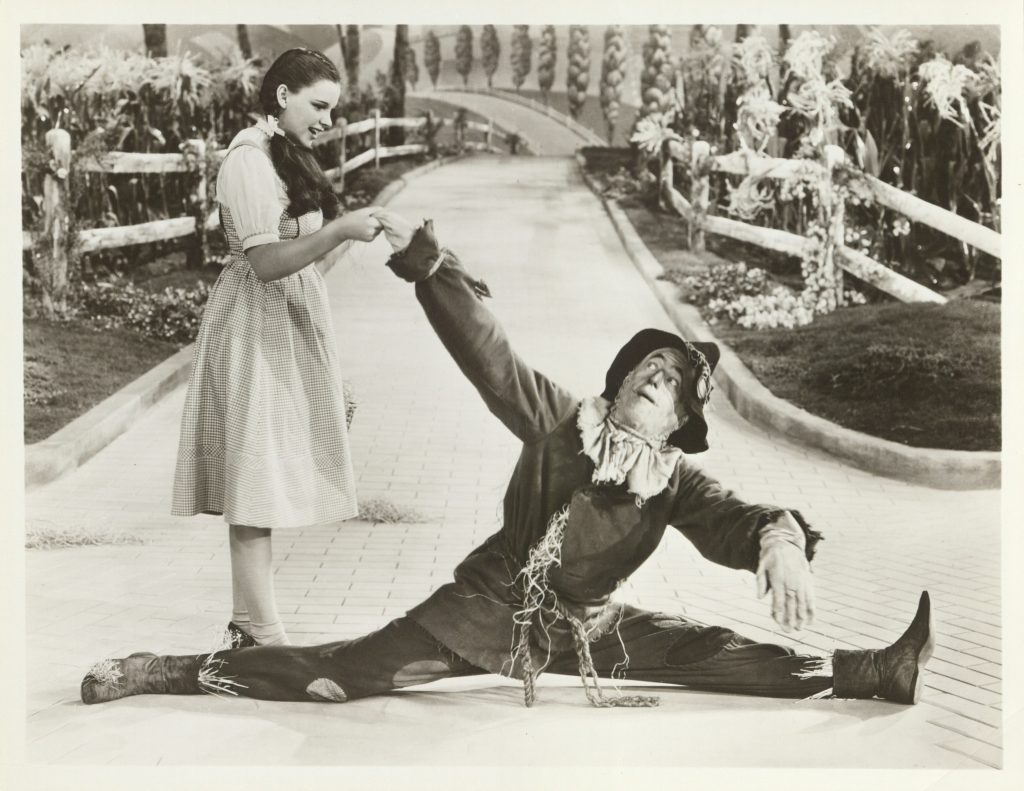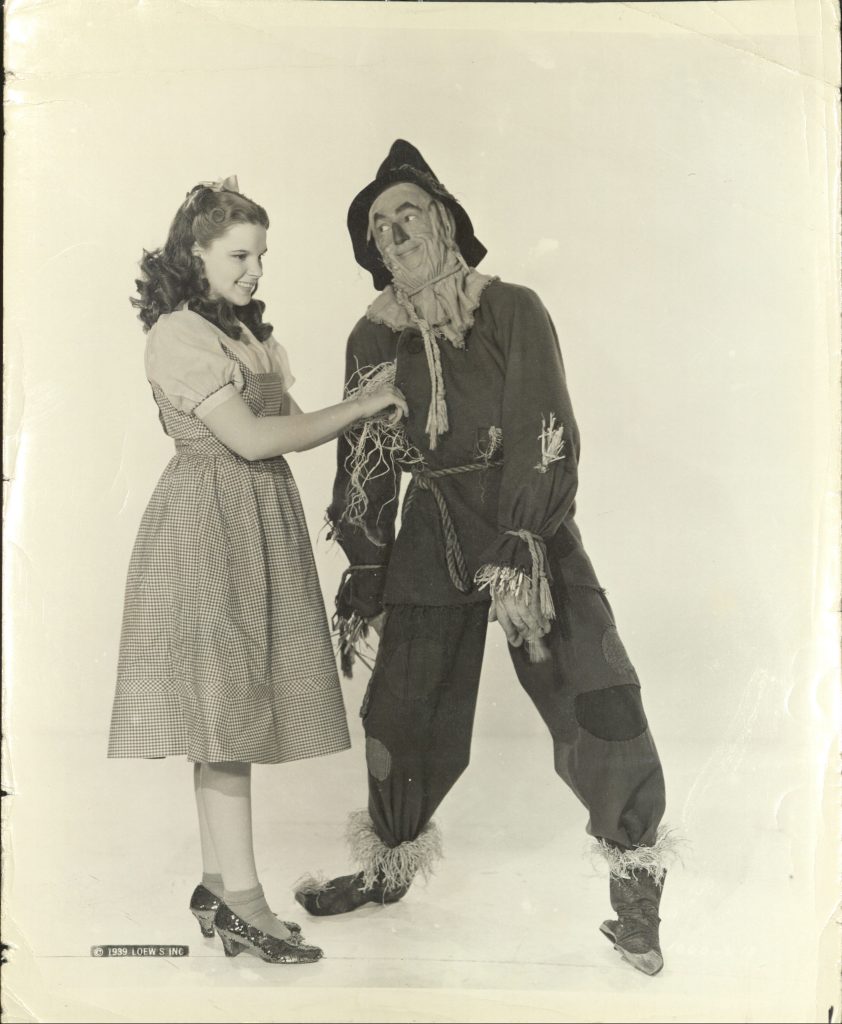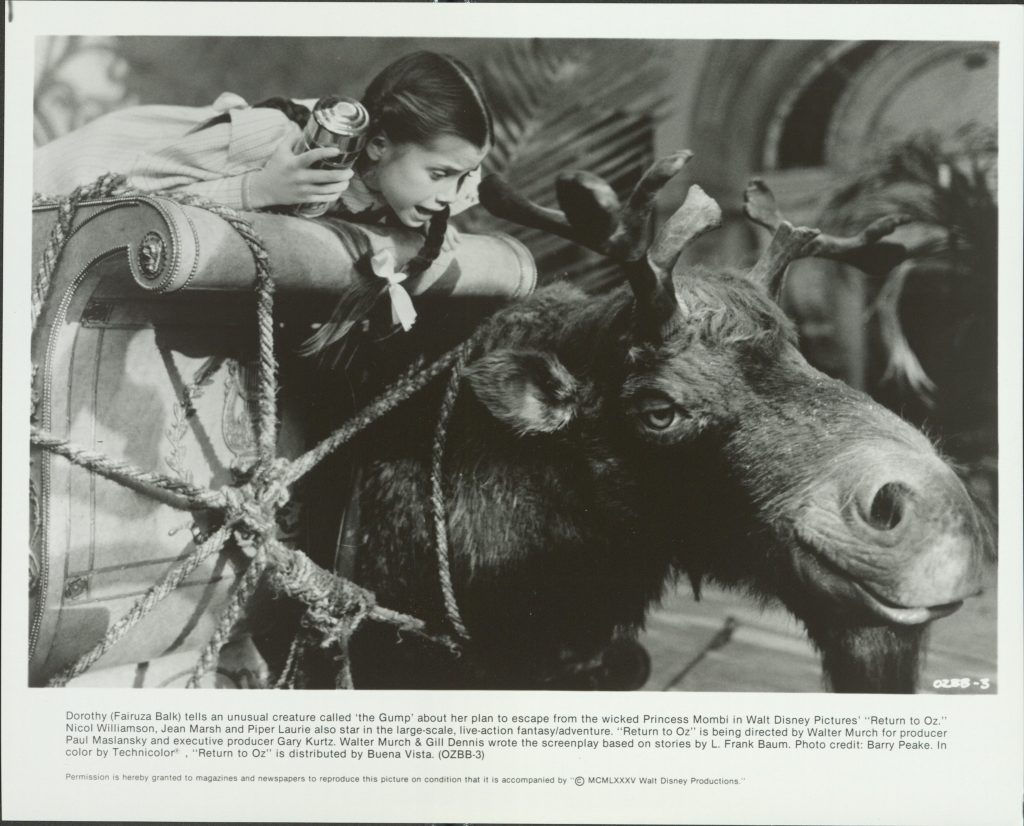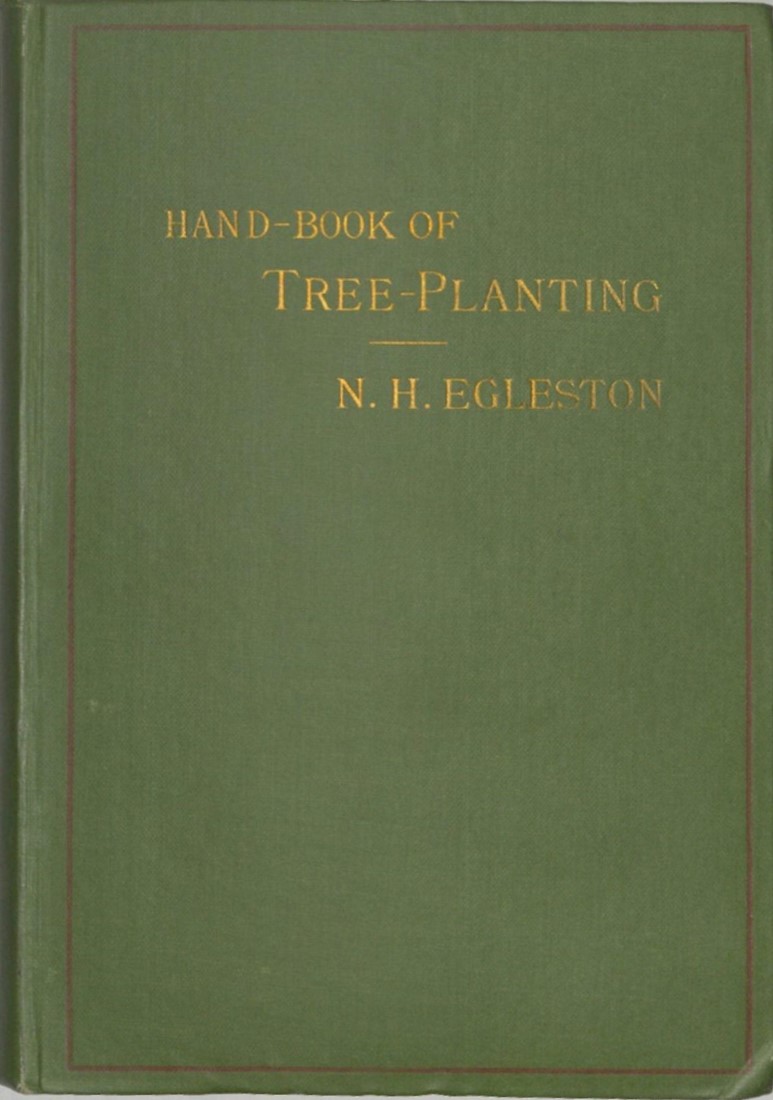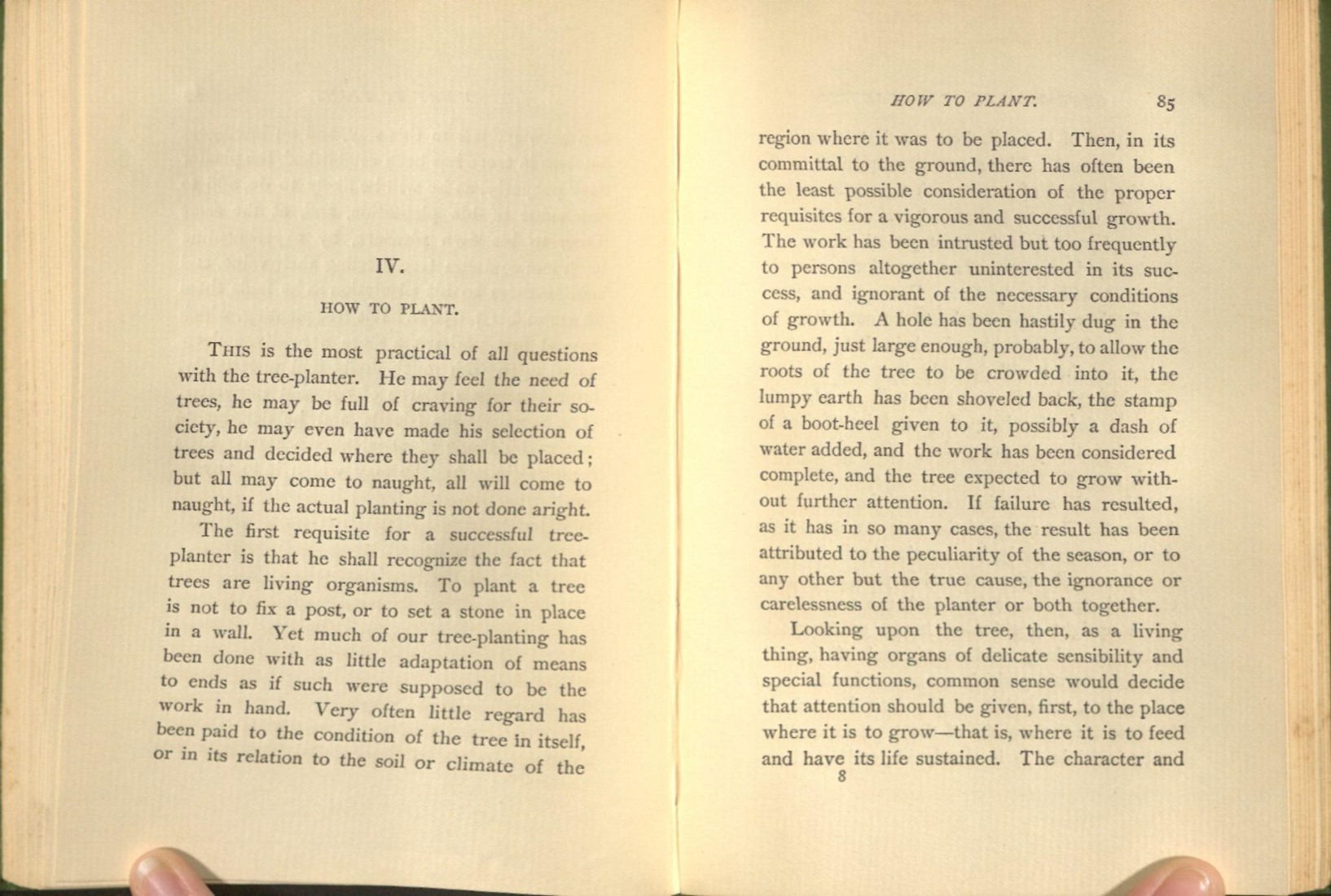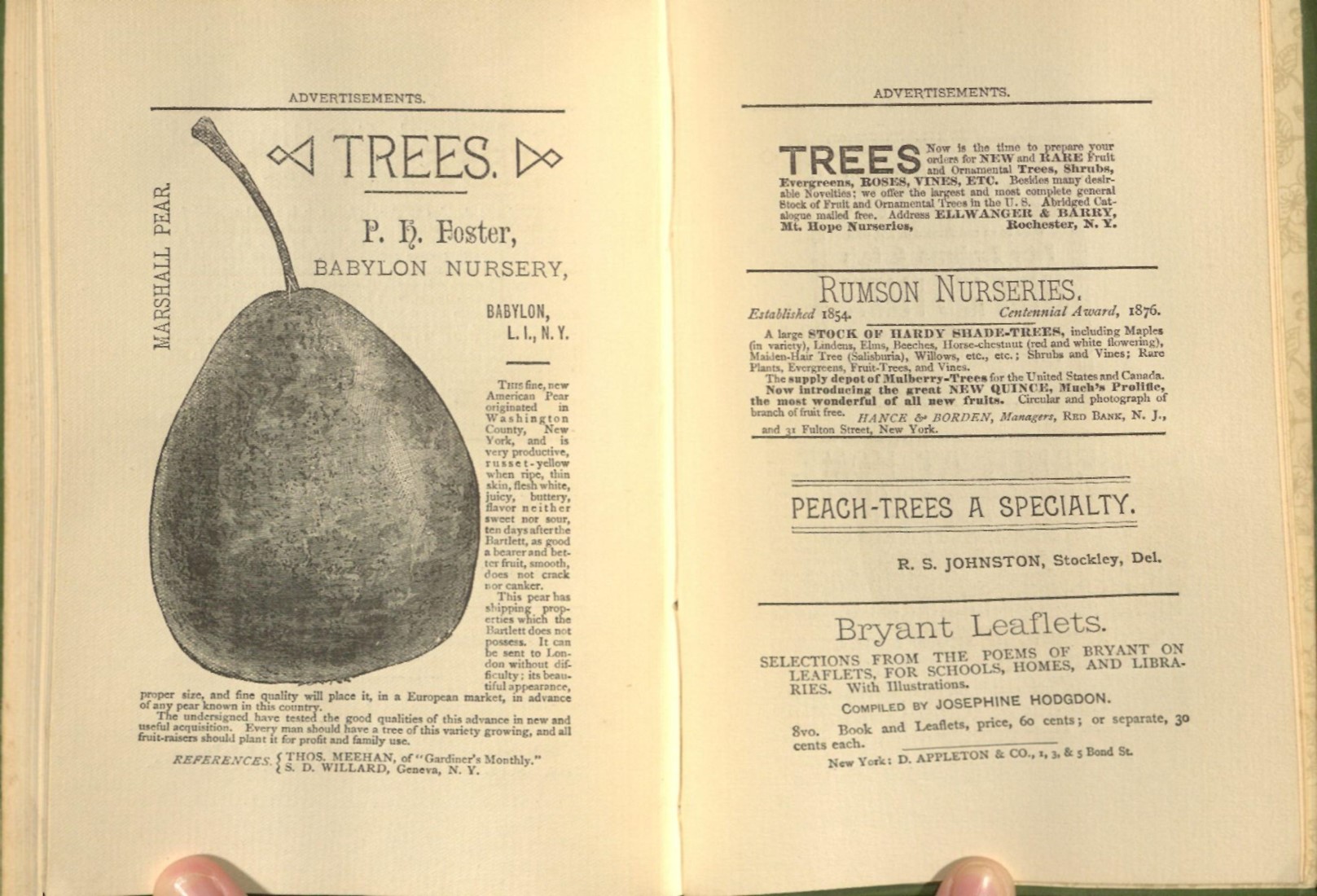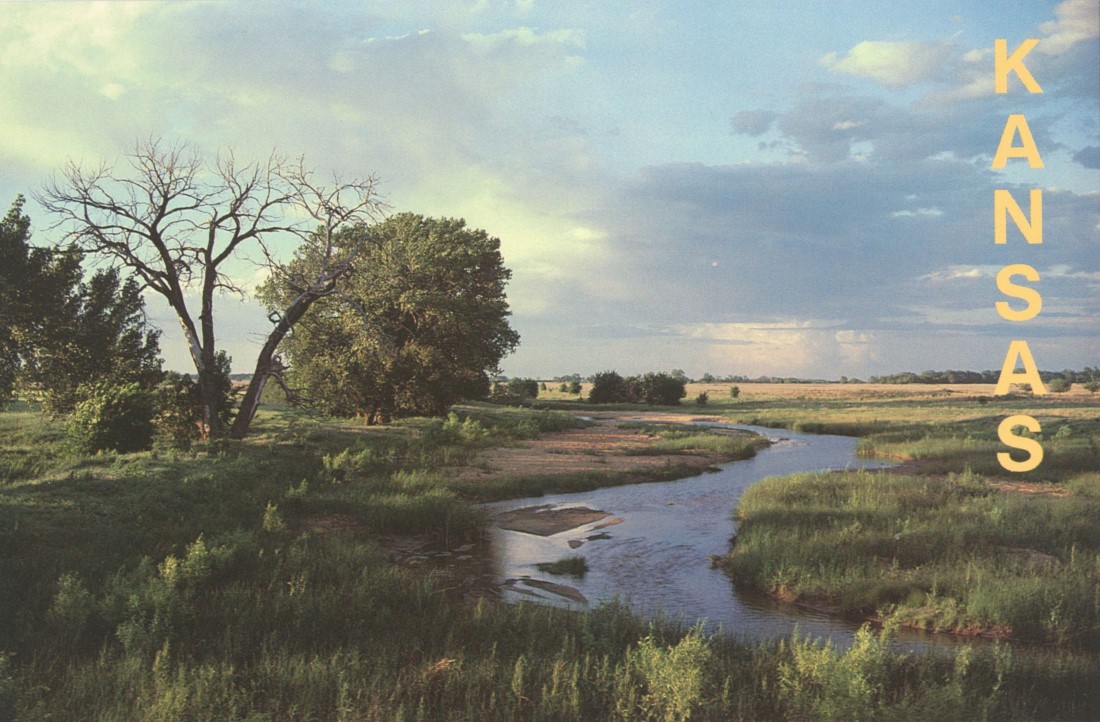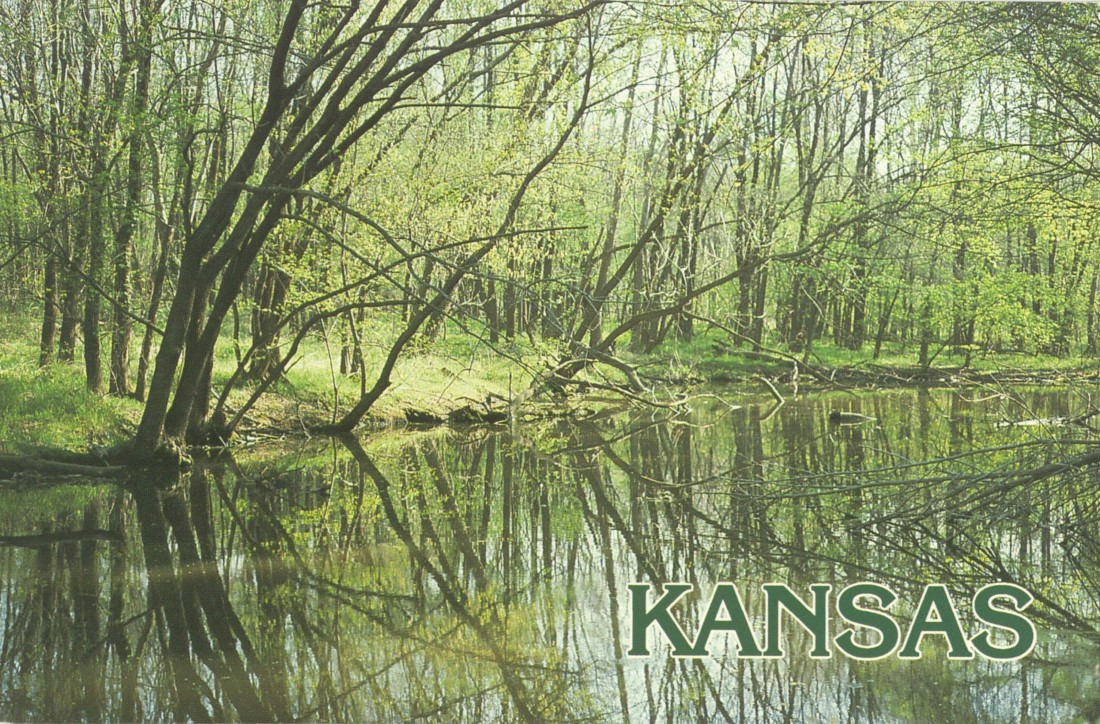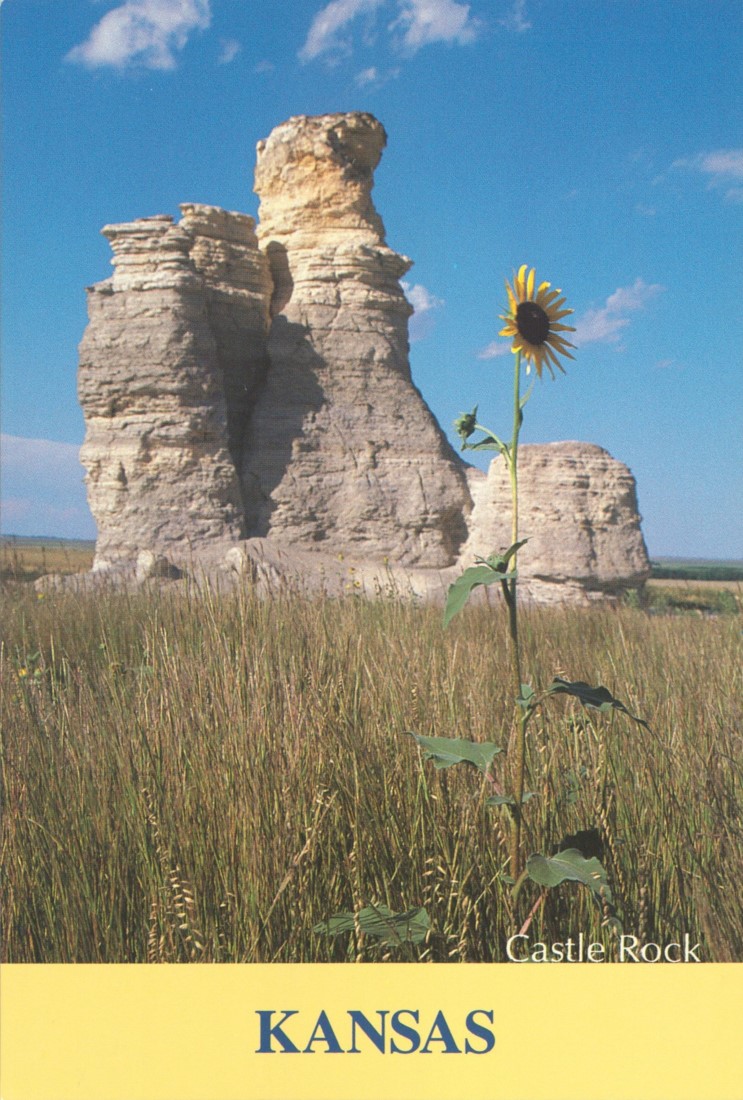That’s Distinctive!: Diary of a Kansas Farm Wife
May 12th, 2023Check the blog each Friday for a new “That’s Distinctive!” post. I created the series because I genuinely believe there is something in our collections for everyone, whether you’re writing a paper or just want to have a look. “That’s Distinctive!” will provide a more lighthearted glimpse into the diverse and unique materials at Spencer – including items that many people may not realize the library holds. If you have suggested topics for a future item feature or questions about the collections, feel free to leave a comment at the bottom of this page.
There will be no That’s Distinctive! post next Friday, May 19. Posts will resume on May 26.
This week on That’s Distinctive! we offer a glimpse into a day in the life of Maude Egbert (1878-1955). The library houses a diary of hers that documents an entry a day for five years. This five-year diary kept by Maude Egbert of Clyde, Cloud County, Kansas, provides a regular accounting of her life as a farm wife during World War II. Activities or events she noted include sewing, entertaining and visiting friends and family, cooking, house cleaning, canning, personal health, farm activities like threshing, acquiring a swarm of bees, creek and river flooding, and the weather. Throughout the diary she calls her husband “Dad.”
The diary Maude used is called Five-Year Horoscope Diary: Your Destiny Day by Day. It was written by Samuel Nisenson and published in 1936 by World Syndicate Publishing. Maude used her diary from 1943 to 1948, although there are some large gaps where she did not fill it out. There are also some pages where the years are written out of order.

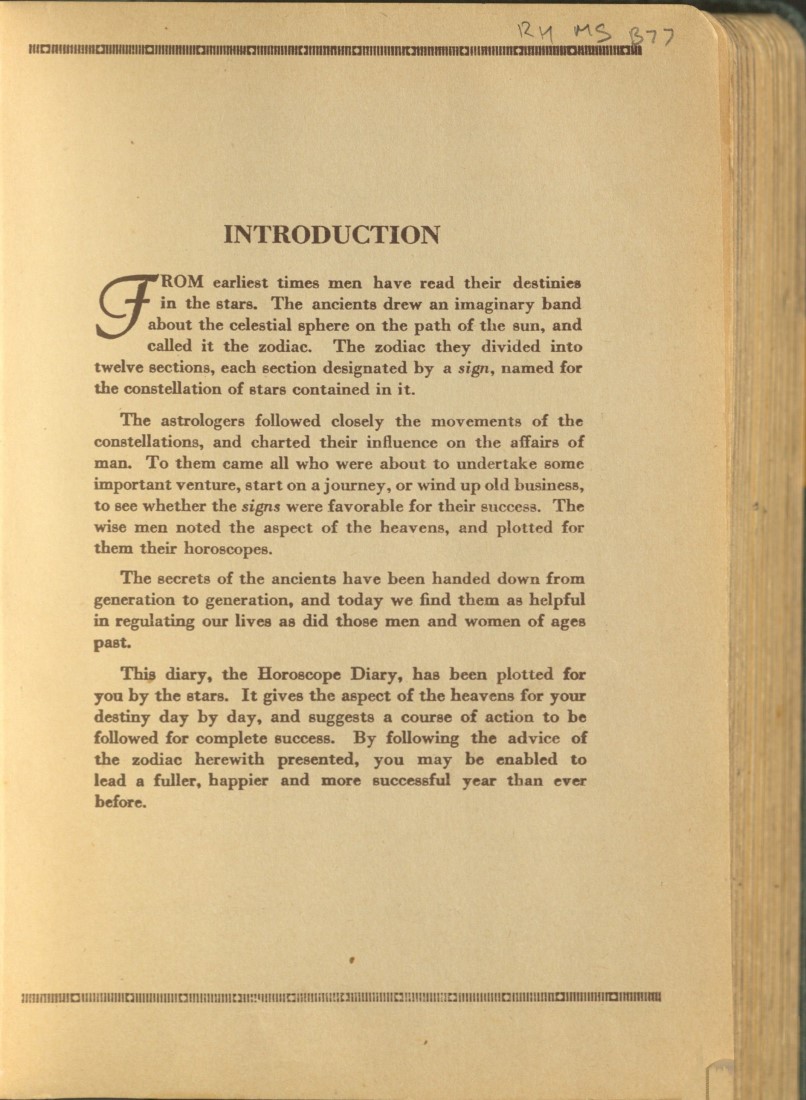
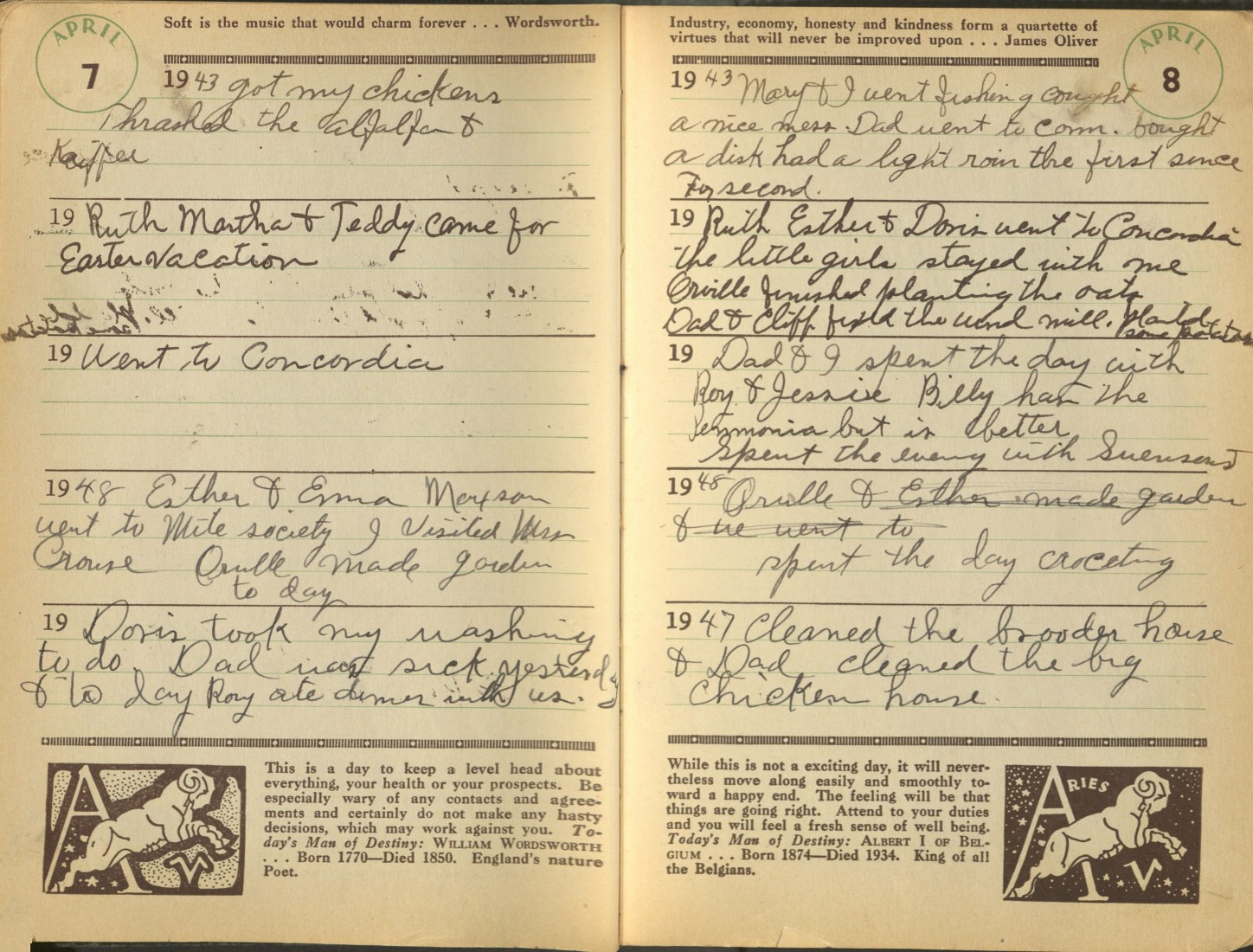
April 7, 1943 got my chickens
Thrashed the alfalfa & [kaiffer?]
19[44] Ruth Martha & Teddy [Maude’s daughter and granddaughters] came for
Easter vacation
19[45] Went to Concordia
1948 Esther & Emma [Mayson?]
Went to Mile Society I visited Mrs
Crouse Orville [Maude’s son] made garden
to day
19[47] Doris [Maude’s granddaughter] took my washing
to do Dad was sick yesterday
& to day Roy ate dinner with us
April 8, 1943 Mary [Maude’s granddaughter] & I went fishing cought
a nice mess. Dad went to [illegible]. bought
a disk had a light [rain?] the first since
[illegible] second
19[44] Ruth Esther & Doris [Maude’s daughter, daughter-in-law, and granddaughter] went to Concordia
the little girls stayed with me
Orville finished planting the oats
Dad and Cliff fixed the wind mill. Planted some potatoes
19[45] Dad and I spent the day with
Roy and Jessie Billy has the
Penmonia [pneumonia] but is better
Spent the evening with [illegible]
1948 Orville & Esther made garden& we went to
spent the day croceting [crocheting]
1947 Cleaned the brooder house
& Dad cleaned the big
Chicken house
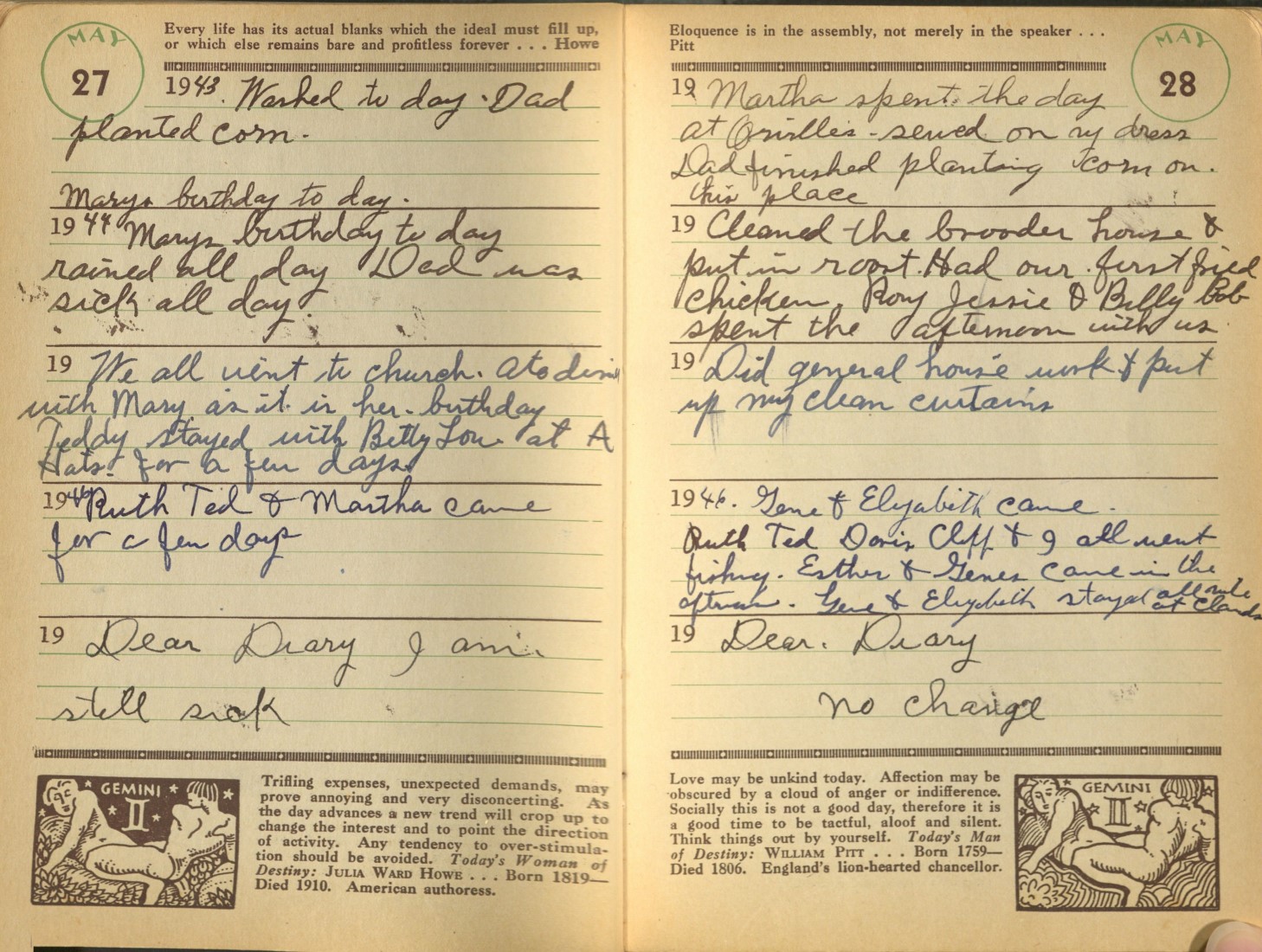
May 27, 1943 Washed to day. Dad
planted corn.
Marys [Maude’s granddaughter] birthday to day.
1944 Marys [Maude’s granddaughter] birthday to day
rained all day Dad was
sick all day
19[45] We all went to church. ate dinner
with Mary [Maude’s granddaughter] as it is her. birthday
Teddy [Maude’s granddaughter] stayed with Betty Lou at A
[Hats]. for a few days
1946 Ruth Ted & Martha [Maude’s daughter, son-in-law, and granddaughter] came
for a few days
19[47] Dear Diary I am
still sick
May 28, 19[43] Martha [Maude’s granddaughter] spent the day
at Orvilles [Maude’s son]. Sewed on my dress
Dad finished planting corn on.
this place
19[44] Cleaned the brooder house &
put in roost. Had our. first fried
chicken. Roy Jessie and Billy Bob
spent the afternoon with us.
19[45] Did general house work & put
up my clean curtains
1946. Gene and Elizabeth came.
Ruth Ted [Maude’s daughter and son-in-law] Doris [Maudes’ granddaughter] Cliff & I all went
fishing. Esther and Genes came in the
afternoon. Gene and Elizabeth stayed all [illegible] at [illegible]
19[47] Dear, Diary
no change
Tiffany McIntosh
Public Services

